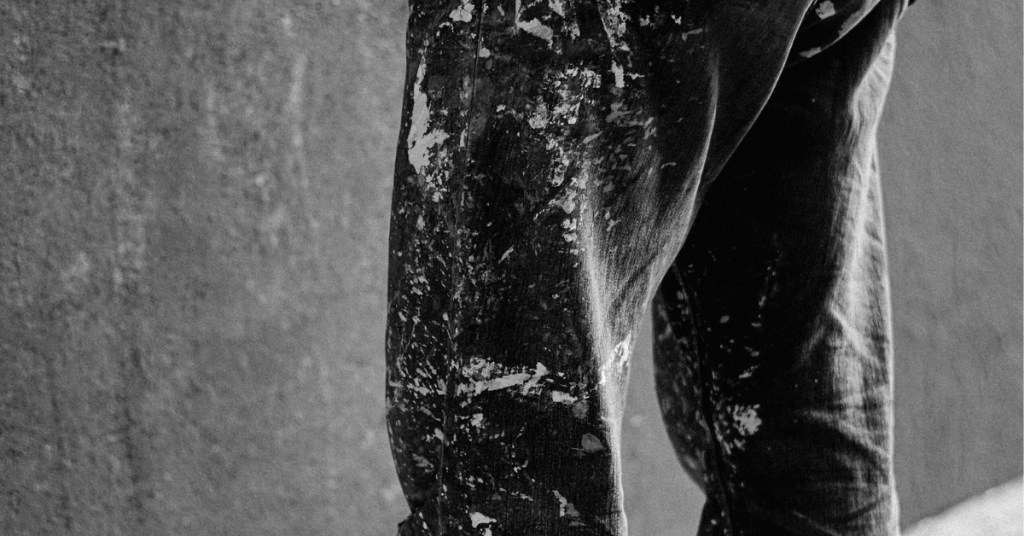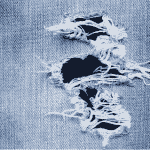Denim jeans are a staple in most people’s wardrobes. They are adaptable and comfy and may be dressed up or down for any occasion. However, one of the biggest downsides of owning a pair of jeans is dealing with stubborn denim stains. Whether it’s a coffee spill, a grease mark, or a smear of lipstick, denim stains can be a real headache to remove.
But fear not! In this ultimate guide, We will walk you through the step-by-step process of removing stains from your favourite jeans, so you can enjoy them for years to come.
Understanding Denim Stains: Different Types and Causes
Before we delve into the stain removal process, it’s important to understand the different types of denim stains and their causes. This knowledge will help us choose the most effective stain-removal method for each specific stain.
-
Coffee and tea stains
These are some of the most common stains found on denim. They can be caused by accidental spills or drips while enjoying your morning brew. The tannins in coffee and tea can leave behind unsightly brown marks on your jeans.
-
Grease and oil stains
Whether it’s from cooking or a mishap at the mechanic’s, grease and oil stains can be a real pain to remove from denim. These stains tend to cling to the fabric, making them difficult to lift.
We’ve all been there – a pen leaks in our pocket, leaving behind an ink stain on our jeans. Ink stains can be particularly stubborn, but with the right technique, they can be successfully removed.
-
Food stains
From ketchup to chocolate, food stains can quickly ruin a perfectly good pair of jeans. The key to removing food stains is to act fast and treat the stain before it sets in.
Steps for removing denim stains
Now that we have a good understanding of denim stains let’s dive into the step-by-step process of removing them from your beloved jeans.
-
Identify the Stain
The first step in any stain removal process is to identify the type of stain you’re dealing with.
Whether it is a food stain, oil, ink, or any other substance, knowing the nature of the stain will help determine the most effective method of removal. Take a closer look at the stain and note its colour, texture, and odour if applicable.
This information will come in handy while selecting the appropriate cleaning agent for your denim. It is worth noting that treating different stains requires specific techniques to achieve optimal results.
Therefore, by identifying the stain correctly, you will be able to employ the most suitable stain removal method and avoid causing further damage to your denim.
-
Pre-Treat The Stain
Pre-treating the stain is crucial for loosening and breaking down the stain before washing. There are several pre-treatment options you can choose from, depending on the type of stain.
Blot the stain with a mixture of water and mild detergent for coffee and tea stains. Grease and oil stains can be pre-treated with dish soap or a specialised stain remover. Ink stains may require rubbing alcohol or a stain-removing pen.
Allow the pre-treatment solution to sit on the stain for a few minutes before proceeding to the next step.
-
Wash The Denim
Once you’ve pre-treated the stain, it’s time to wash the denim.
This step involves thoroughly cleaning the stained area to ensure its complete removal. Start by soaking the garment in cold water for about 30 minutes, allowing the water to penetrate the fibres and loosen the stain.
Next, flip the denim inside out and place it in your washing machine along with similar-coloured garments. It is advisable to use a gentle cycle with cold water as this will prevent any further damage or colour bleeding.
Additionally, choose a mild detergent that is suitable for denim fabrics. Avoid using harsh chemicals or bleach since these might cause discoloration or deterioration of your denim. Once the washing process is complete, inspect the garment closely to ensure that the stain has been successfully eliminated.
If any remnants remain, repeat the steps until complete elimination has been achieved.
-
Spot Treatment
For stubborn stains that didn’t come out during the wash, spot treatment is your next line of defence. Mix a small amount of detergent with water to create a paste-like consistency. Scrub the stain gently with a gentle brush or toothbrush after applying the paste.
Be careful not to scrub too hard, as it can damage the fabric. Rinse the spot with cold water and check if the stain has faded. If necessary, repeat the spot treatment process until the stain is no longer visible.
-
Soak In Vinegar
Natural stain remover vinegar works particularly well on stains on denim. Fill a basin or sink with cold water and add a cup of white vinegar. Submerge your jeans in the vinegar solution and let them soak for at least 30 minutes.
The vinegar will aid in the breakdown of any lingering stains and the elimination of odors. After soaking, rinse your jeans thoroughly with cold water and proceed to the next step.
-
Sun Drying
After treating your jeans with vinegar, it’s time to let them dry. Hang your jeans outside in direct sunlight, as the UV rays can help further lighten any remaining stains.
Make sure to turn your jeans inside out to prevent fading. Allow them to air dry completely before checking if the stains are completely gone.
-
Repeat if Necessary
In some cases, stubborn stains may require multiple rounds of treatment. If you’ve followed all the steps and the stain is still visible, don’t give up just yet.
Repeat the pre-treatment, washing, and spot treatment steps until the stain disappears. Remember to be patient and gentle with your jeans to avoid damaging the fabric.
Conclusion
With the ultimate guide to removing stains from your favourite jeans, you’ll never have to worry about denim stains again. By following the step-by-step process of stain removal and understanding the different types and causes of denim stains, you can keep your jeans looking fresh and stain-free for years to come.
So, next time you encounter a stubborn stain, don’t panic – just refer back to this guide and say goodbye to denim stains once and for all.






